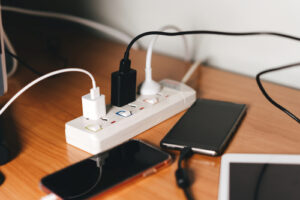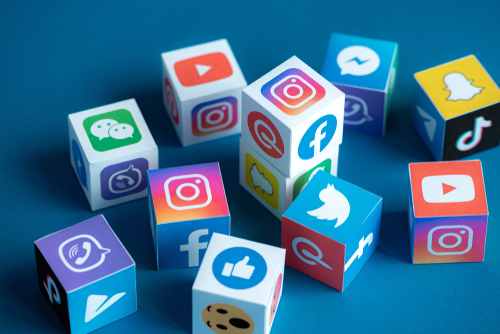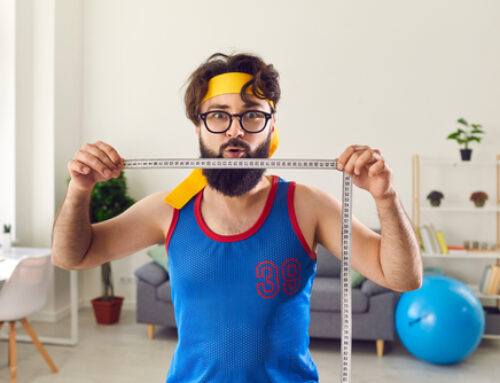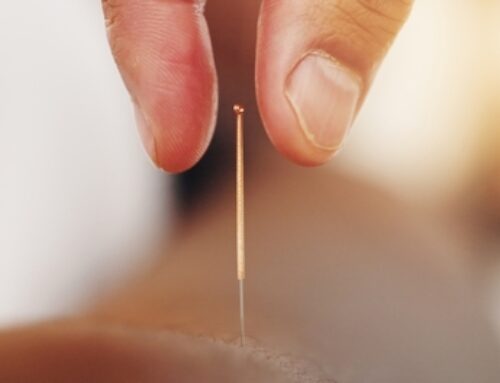One of the most overlooked health concerns in modern medicine is the impact that the digital world has on our health. When Mark Zuckerberg launched TheFacebook at Harvard University in February 2004 nobody could have predicted the impact that it would have on our mental and social health. What started with just 650 students a few days after TheFacebook launched, has grown to nearly two billion people a day scrolling through the pictures and stories of those they know and whom they don’t.
 Concurrent with Facebook’s meteoric expansion has been growing concern over the mental well-being of adolescents and young adults. According to data from the Centers for Disease Control, the suicide rate among 10- to 24-year-olds was stable from 2000 to 2007; it then increased 57% between 2007 and 2017. Given these parallel trends, it’s important to understand the relationship between mental health and technology use, especially how youths use social media.
Concurrent with Facebook’s meteoric expansion has been growing concern over the mental well-being of adolescents and young adults. According to data from the Centers for Disease Control, the suicide rate among 10- to 24-year-olds was stable from 2000 to 2007; it then increased 57% between 2007 and 2017. Given these parallel trends, it’s important to understand the relationship between mental health and technology use, especially how youths use social media.
When researchers studied the mental health records of students who attended Harvard shortly after the launch of TheFacebook, they were astonished with their findings. College-wide access to Facebook led to an increase in severe depression by 7% and anxiety disorders by 20%. Beyond these results, a greater percentage of the most susceptible students also treated symptoms with either psychotherapy or antidepressants. In total, the negative effect of Facebook on mental health appeared to be roughly 20%, this is similar to what is experienced by those who lose their job.
Social Media Mimics Drug Abuse
As of 2021, 4.5 billion people, more than half of the global population, had a social media account. Most report using their social media daily and many several times a day. When researchers study why people are so drawn to their social media accounts they find that social media has a reinforcing nature. Using it activates the brain’s reward center by releasing dopamine, a “feel-good chemical” linked to pleasurable activities such as sex, food, and social interaction. The platforms are designed to be addictive. Similar to any addiction, prolonged use of social media is associated with anxiety, depression, and even other physical ailments.
The Addictive Feedback Loop.
But what makes users come back for more even when it can literally make them feel sick? It is because the outcome is unpredictable. Any behavior is more likely to be repeated if there is an unpredictable reward. Think of a slot machine: if game players knew they never were going to get money by playing the game, then they never would play. The idea of a potential future reward keeps the machines in use. The same goes for social media sites. One does not know how many likes a picture will get, who will like the picture, and when the picture will receive likes. The unknown outcome and the possibility of a desired outcome can keep users engaged with the sites.
To boost self-esteem and feel a sense of belonging in their social circles, people post content with the hope of receiving the most positive feedback. Couple that content with the structure of potential future reward, and you get a recipe for constantly checking platforms.
Comparison and FOMO Traps
When reviewing others’ social activity, people tend to make comparisons such as, “Did I get as many likes as someone else?,” or “Why didn’t this person like my post, but this other person did?” They’re searching for validation on the internet that serves as a replacement for meaningful connections they might otherwise make in real life.
FOMO—fear of missing out—also plays a role. If everyone else is using social media sites, and if someone doesn’t join in, there’s concern that they’ll miss jokes, connections, or invitations. Missing experiences can create anxiety and depression. When people look online and see they’re excluded from an activity, it can affect thoughts and feelings, and can affect them physically. Many studies have shown that social media use decreased, disrupted, and delayed sleep, which is associated with depression, memory loss, and poor academic performance. Social media use can affect users’ physical health even more directly.
Researchers know the connection between the mind and the gut can turn anxiety and depression into nausea, headaches, muscle tension, and tremors. This has been shown to be very true with adolescents. The earlier teens start using social media, the greater impact the platforms have on their physical health. This is especially true for females. The relationship of eating disorders and poor gut health to social media interactions is a growing area of research. Early indications are that females are much more prone to develop an altered eating strategy after only a few minutes on their social media accounts.
Filters Alter Perceptions
In addition to providing young people with a window through which they can view missed experiences, social media puts a distorted lens on appearances and reality. Facebook, Instagram, and Snapchat increase the likelihood of seeing unrealistic, filtered photos. In the past, teens read magazines that contained altered photos of models. Now, these images are one thumb-scroll away at any given time. Apps that provide the user with airbrushing, teeth whitening, and more filters are easy to find and easier to use. It’s not only celebrities who look perfect—it’s everyone.
When there’s a filter applied to the digital world, it can be hard for teens to tell what’s real and what isn’t, which comes at a difficult time for them physically and emotionally. Adults are vulnerable, too. In recent years, plastic surgeons have seen an uptick in requests from patients who want to look like their filtered Snapchat and Instagram photos.
Social Media’s Effects On Real Relationships
 A New York Times article that ran in June 2018 featured a newlywed couple who nearly separated after their honeymoon. The reason: the wife spent more time on the trip planning and posting selfies than she spent with her husband. How many times have you been in a restaurant only to watch a couple at a table scroll on their phones instead of spending the time conversing with each other? When polled many people report finding it easier to interact with people online than it is in person. They cited that they are more likely to have a favorable outcome with their online interaction than with their in-person communication. However, they acknowledged that the in-person communication was more satisfying overall.
A New York Times article that ran in June 2018 featured a newlywed couple who nearly separated after their honeymoon. The reason: the wife spent more time on the trip planning and posting selfies than she spent with her husband. How many times have you been in a restaurant only to watch a couple at a table scroll on their phones instead of spending the time conversing with each other? When polled many people report finding it easier to interact with people online than it is in person. They cited that they are more likely to have a favorable outcome with their online interaction than with their in-person communication. However, they acknowledged that the in-person communication was more satisfying overall.
Can We Change
People aren’t usually motivated to change their social media use by simply hearing it’s bad for them. It’s better for individuals to see what their limits are. It’s probably unrealistic for most social media users to quit completely. However, they can monitor their behavior to see how their use impacts them, and how to act as a result.
Start by assessing if one or more specific platforms increases negative physical or mental symptoms such as nausea, insomnia, anxiety, or depression. It may be best to rate each time period you use these platforms noting how you felt before and after their use. If one notices that one feels less happy after using them, then one might consider changing how one uses social media sites, such as using them for less time and doing other activities that one enjoys instead.
Several studies have shown that limiting your social media to only 10 minutes a day can profoundly increase feelings of being lonely and depressed. These studies often report significant decreases in anxiety and fear of missing out compared to where they were at the study’s beginning. You might even try doing a social media detox for 72 hours or more. A complete social media blackout can also increase your productivity significantly.
Set A Good Example
Parents can develop a plan of how family members will spend their time on their devices. If you don’t want your kids on the phone during dinner time then parents should also keep their phones off during dinner. A no phone at the table rule is often a great place to start for the whole family.
 Another example like this might be for parents and teens to turn in their phones at night before bed. Placing phones in a common area and not keeping them in the bedroom helps spouses connect with each other before bed and children from using their phones in their room without supervision. Strategies like these teach kids healthy media use and good sleep hygiene.
Another example like this might be for parents and teens to turn in their phones at night before bed. Placing phones in a common area and not keeping them in the bedroom helps spouses connect with each other before bed and children from using their phones in their room without supervision. Strategies like these teach kids healthy media use and good sleep hygiene.
Social Media Oversight Is Necessary
When teens start using social media, parents can ask them to turn in their phones at night with the understanding that parents can review posts and messages. This helps parents to be in the know, as sometimes young people will share struggles online while parents have no idea. Monitoring also encourages teens to remember that everything they share online is a permanent fingerprint. If they don’t want their parents to see it, then it shouldn’t be posted. Psychologists often suggest that parents institute a “no selfie” policy or a rule that kids can post pictures of tangible objects but no photos of themselves. This way, children can share their experiences without emphasizing a focus on their appearance.
At What Age Is Social Media Acceptable
A common argument for children to ask for social media access is that they are missing out on important communications between friends, sports teams, and other social networks. While this can be difficult, simply communicating to these groups that your child does not have social media and that they will need other forms of communication to circumvent the lack of social media access can be an easy remedy.
 Only parents can decide when their child is ready for social media access. Understanding both the positives and the negatives that social media brings is very important. Continual assessment of social media’s impact on your health and the health of your children is necessary to reduce the potential detrimental effects that social media may pose.
Only parents can decide when their child is ready for social media access. Understanding both the positives and the negatives that social media brings is very important. Continual assessment of social media’s impact on your health and the health of your children is necessary to reduce the potential detrimental effects that social media may pose.







